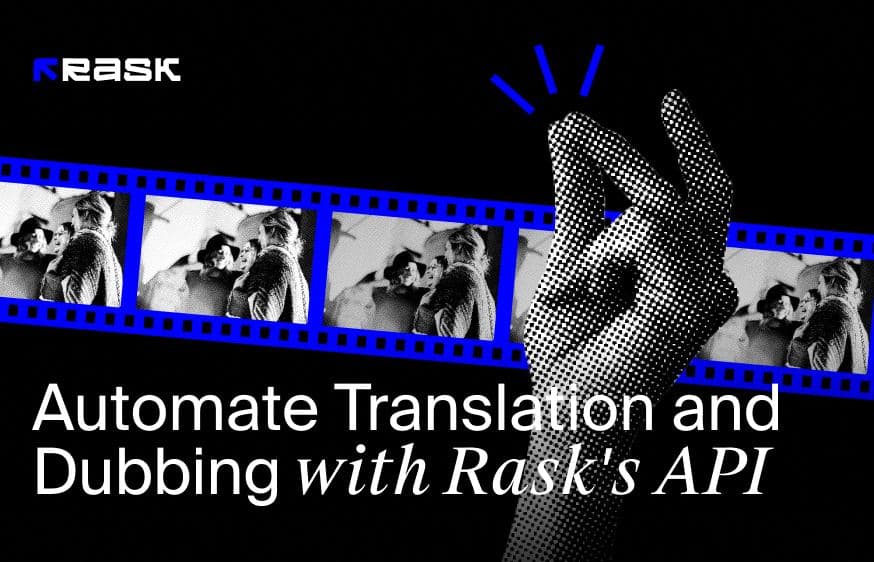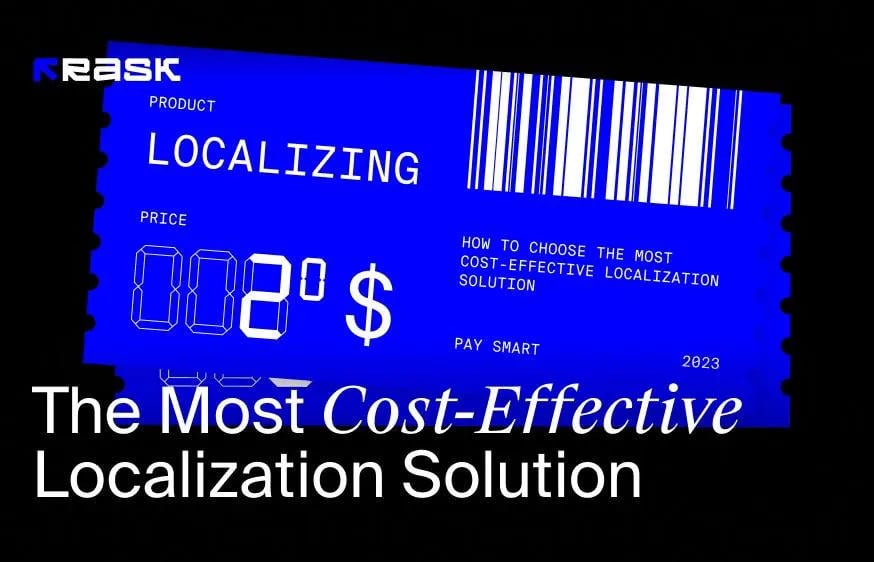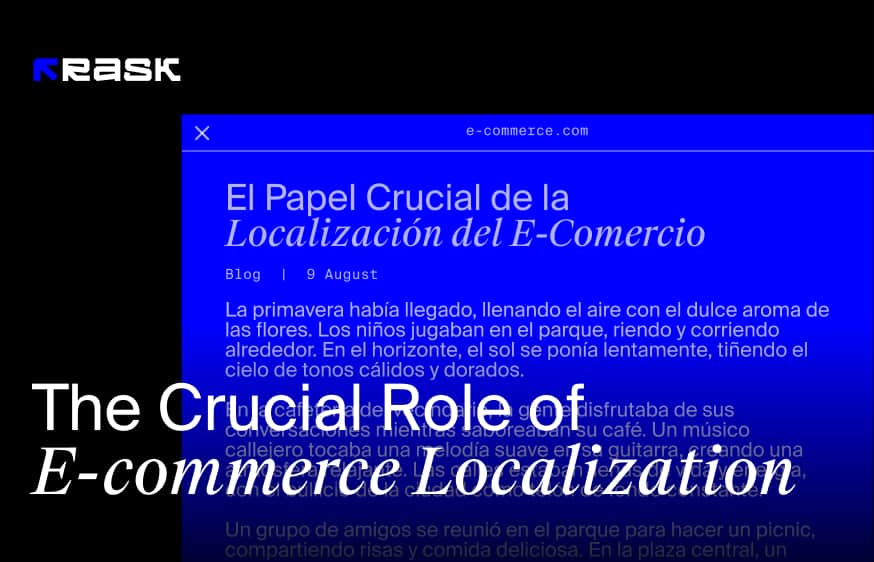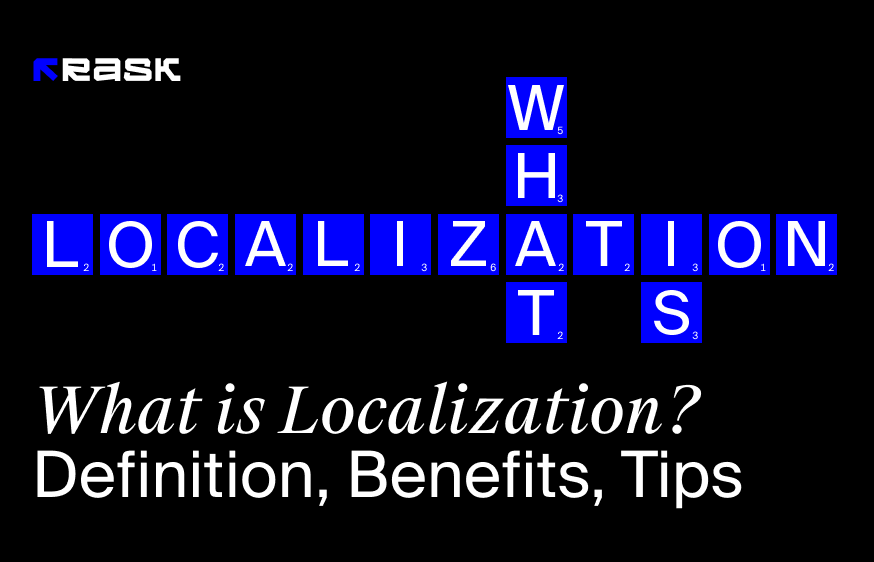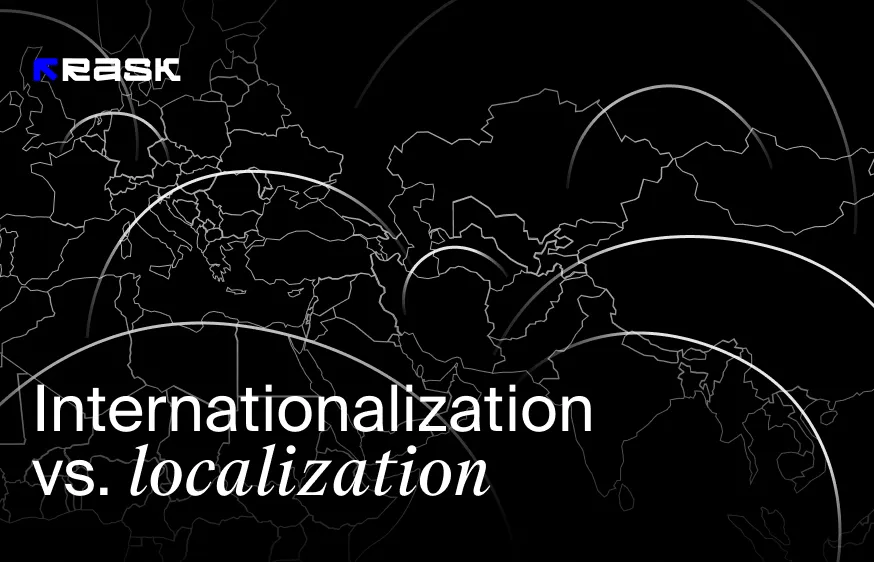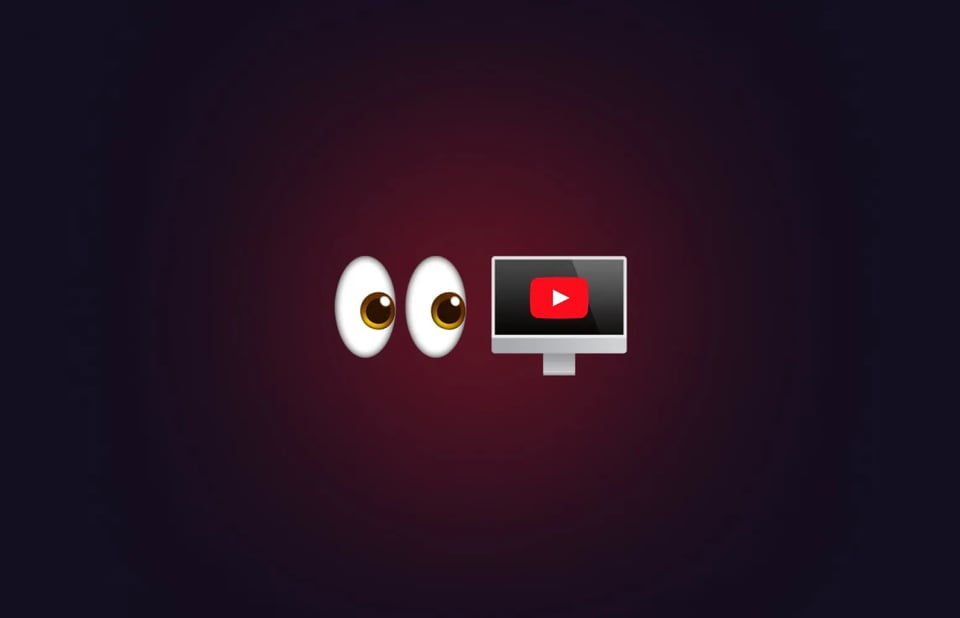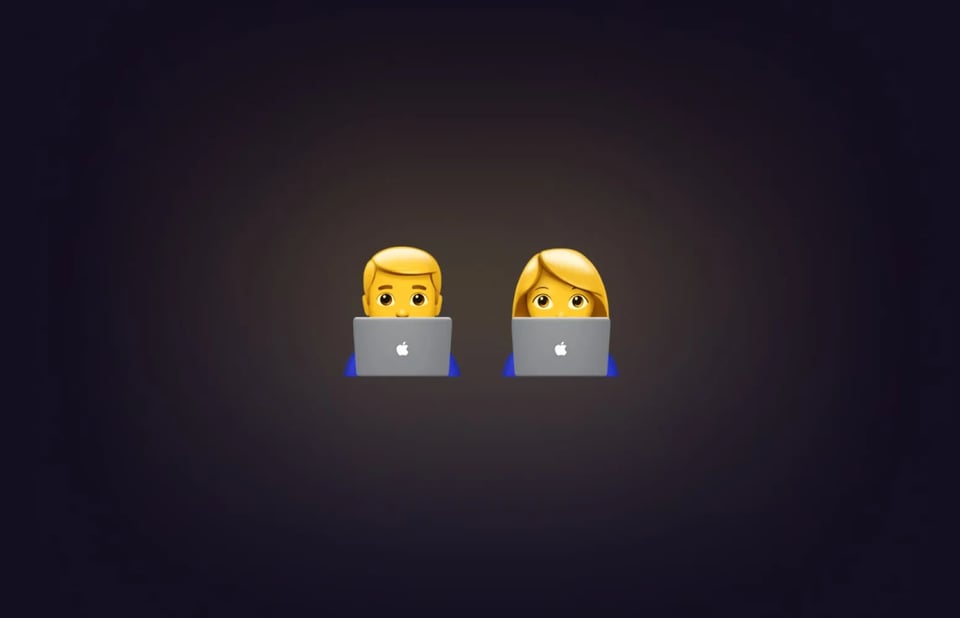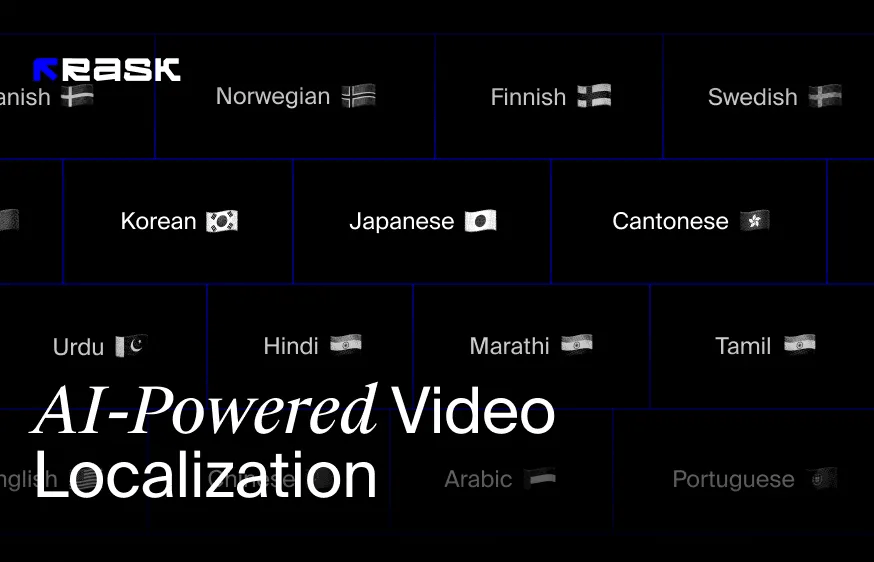Breaking Barriers: The Role of Game Localization in Global Success
As a game developer, you may wonder how to streamline your business and break into new markets in 2023. While looking for information, you have probably come across terms like "professional" localization services, literal translation services, "professional" subtitling services, etc.
But have you ever found an answer to what it means? Why are these services so popular in today's digital world? How to achieve success in the global video game industry with game localization? You just found your wild card, so let's dive deeper.
The popularity of localization services isn't linked solely to video games; this relates to businesses in a vast range of industries. However, here, we are going to focus on games. Simply put, localization is a perfect option for any game company that wants its games to attract a global audience.
What is Video Game Localization?
Video game localization is more than just translation. This is the process of adapting the game to a new video game market. This process involves many steps that take the original game and tweak it until the video game and its audience look like a perfect fit.
Like in traditional marketing, some things are better, and some are not. The same happens with localization - different cultures and markets have different local tastes, values, cultural nuances, religions, and, of course, languages. In order to create the best player's immersion, you will need to adapt the product to all the differences markets have. The Importance of Games to Access the Global Market
As with any other business, game companies would also benefit from tapping into new customer segments, expanding their audience, as well as building solid relationships with customers by speaking their native tongue.
Let's say you run a business in London. What stops you from making your game available in Germany, Spain, or Greece? The short answer is language barriers, major considerations with translation and lack of understanding in localization. Getting rid of this key factor will help you start moving further twice faster.
Benefits of Video Game Localization
1. Increase Your Sales
Video games are the most popular and impressive way to keep your audience engaged and entertained. It is hard to find a person who either never played games or doesn't want to play a great game when time permits. If your product isn't localized, do you think people will be able to find it or invest time to understand the game's native language just to play?
The answer is no.
If you want to make your game understandable and easy to play for your customers, localization is a must-have. The more audiences you attract with the game localization, the higher sales will eventually be. So there is no need to waste time.
2. Make Games Personalized
Game localization also makes customers feel more important. This effect is achieved since you make the game tailored to a new audience's specific needs. Full localization of the game allows you to please both existing and new customers even before they actually start gaming.
Personalization is a crucial factor in business success today since it is the only way for companies to stand out from competitors. Businesses that know their target audience tend to have the most loyal audience and highest sales across different marketing channels. Let's be honest: Who doesn't like personalization, especially when it comes to your favorite game?
3. Better App Store Rankings
There is a high amount of games in the mobile app store of every country. But not every game is 5-star rated (to be honest, not every game has even three starts). However, those who were able to achieve five stars tend to have one thing in common - localization. Statistics show that video games in English version merely reach 27% of the global gaming market.
4. Increased Trust
Video game localization shows that your company respects other cultures via website translation process and localization of game elements. Based on the CSA Research, 60% of non-native English speakers either rarely or never purchase games that are not localized. The same source reports that 64% of buyers say they value localized website content. Cultural adaptation lets you gain customers' trust and loyalty more than with any discounts or marketing campaigns.
When your game and you, as a company, are able to gain trust, you can also increase key performance indicators (KPIs) to see a sizable lift. KPIs are used to estimate and measure the overall performance of the product or a company, its activities, processes, and the progress of specific projects.
5. Stronger Brand Consistency
Localizing games means localizing your website, marketing campaigns, and any other business element. And this gives you full control over the message you want to translate to your new target audience, delivering a consistent brand and gaming experience across all markets.
Localization ensures that your brand messaging is as accurate and relevant as it can be and it aligns with business goals. Localization also goes above that, guaranteeing that all the video game content is not only translated but also covers all cultural elements and preferences of each new region, organizing brand consistency and improving brand image.
6. Better Segmentation
Companies can now use translation services and localization tools to make it easier to share customized messages with viewers in different global markets. The ability to quickly generate a translated text and to control the brand message also improves the segmentation of markets, allowing you to speak directly to local audiences for better targeting.
Is Game Localization the Same Thing as Translation?
The short answer is no. You can just translate the text and speed in the game with a level of sophistication that recognizes all the idioms, terms, and cultural references. Or you can use a word-for-word video game translation as a multifaceted task. Localization goes further than just translation. There are three terms that people often confuse when speaking about breaking into a new video game market. Let's take a closer look at their differences to make your game available for global use.
Translation
Video game translation is simply a process of translating the written and spoken worlds into the target language. Although it is a crucial step in making your product available for the international market, translating alone won't bring the expected outcomes. It requires you to either hire an experienced native-speaking team, or you can go further with accurate and cost-effective solutions like Rask AI, which offers over 60 languages to translate your game.
Internalization
Internationalization prepares your game for localization, making the technical infrastructure of the product adaptable to any market.
It is a technical step of the localization that is done by the development team. Internationalization is used to address problems like text character encoding and ensure the source code will function as expected in different locales. It also solves issues of date and time formats, user interface, and other similar elements.
Although some companies skip this step, internationalization is vital to localization success. It also speeds up the process and makes localization more efficient. Its importance is even higher when localizing large games or choosing several locales at one time.
Key Video Game Elements that Localization Involves
1. In-Game Story Elements
A game engages and keeps users interested. That is where the story element localization comes into the picture. All story elements, including character names, place names, and weapon names, should be localized to offer the player as accurate and personalized experience as possible. Names of the elements that just "don't fit" with the script can force your potential players to leave the website or an app within minutes.
For example, if the game story happens in Spain, the street names and the stores should be taken from Spain. There are some other cultural nuances, like that some names that are feminine in our language and culture might be male names in others.
Your video game localization partner (if you have one) can help you analyze all the elements of your game so you can see what should be localized, from the name and look of each character and item to street names and plot points. This can ensure that your game is easy to follow and play.
2. Technical Elements
Localization of technical elements like times, dates, and units of measurement are often skipped because of complexity. However, they are a crucial part of developing an immersive and smooth gaming experience. Here, you may seek professional help since these are technical elements that require knowledge in the domain.
For example, adapting a text space in the UI. This is crucial since this space is usually often limited, so it may become a problem when translating a game’s text using a different alphabet, like German.
3. Marketing Elements
Marketing campaigns should also be localized. Although you can just focus on creating relevant social media accounts, the best results are achieved when marketing teams invest time in crafting a range of marketing materials to maximize the appeal and commercial success of their games globally.
Localizing your marketing elements isn't just about advertisements and graphic design, though in some cases, that may be sufficient. In more extreme cases, the localization strategy may involve an entirely new monetization strategy, as gamers in different regions have unique habits when making gaming purchases.
Video Game Localization Process | Steps
Step 1: Choose New Target Markets
The first step is always choosing the target market you want your product to be available for. Do not choose multiple languages that are claimed to be the most popular ones. Although you can take one or two of the most popular languages, we always recommend thoroughly checking the entire list of potential markets, performing an analysis with your game, and choosing ones that can contribute to your long-term success.
For instance, the top 10 countries by game revenue are:
- China;
- US;
- Japan
- South Korea;
- Germany
- United Kingdom;
- France;
- Canada;
- Italy;
- Spain.
It is also best to consider countries with the biggest amount of smartphone and laptop users. These are people you may want to attract since smartphone users spend most of their day holding phones.
You can also check the analytics of the game downloads and see which countries download your game the most - a practical and safe way to explore who you want to attract next.
Step 2: Decide Whether You Need to Update the Content Before Start
Most games' downloadable content includes elements like voice messages, images, instructions, strings, and game and character descriptions. While you can leave some elements irrespective of the new market location (such as neutral images), some elements should also be involved in the localization kit and be adapted to the new target culture.
For example, some countries prefer realistic pictures over cartoon drawings in games, so make sure that all game elements bring positive cultural effects on your target markets. Names of the characters should make the players feel close to their culture. For instance, a game character named "John" is more appropriate for the US market than a name like «Muhamed,» which is best for the Arabic market.
Step 3: Localize Your Code
As we mentioned, localization is a complete process. So, you will also need to localize your game code. Although it is always best to make your code compatible, in some cases, companies need to extend the process to get the expected results in terms of technical localization.
We recommend following the localization standards of the platform your game is designed for. Let's say that your video game is developed specifically for Android users - here, you will need to follow and stay compliant with Android localization standards from a coding perspective.
Developing a stable and localization-compatible code will guarantee that all the game content is fully integrated with the translation management system, so you don't make the localization twice as long.
Step 4: Prepare A Brief For a Localization Team
Localizing your video game could be a time-consuming challenge. Aside from that, a lack of knowledge and understanding of the localization strategy could lead to costly mistakes that you would resolve after the release. No one wants that, so most game developers prefer to hire localization teams instead of creating one from scratch or hiring freelancers for each task. The localization team can start only by having a brief of what you want to achieve by the end of the development process and localization.
A well-structured and clean brief usually involves the following elements:
- Length of the strings;
- The tone of the language;
- How to handle characters names;
- How to handle date formats;
- Any other language-related instructions.
Step 5: Use AI-based Tools
Whether you work with a translation, or localizing company or not, the key part of the localization kit can still be done using AI-based tools for cost-effectiveness and higher accuracy. For example, you can use one of the leading localization tools - Rask AI. It allows game development companies to easily localize their products in over 60 languages to their preferences. Rask also offers a vast range of tools that are useful for the seamless and fast localization process. These include:
AI tools will help you save time wasted on hiring, quality assurance testing, and releasing localized games.
Step 6: Test The Localized Game
The last step is to test your game. Since many teams are involved in the video game localization process, it is best to test the localized copy of the game before releasing it to the new market. You can either ask your localization team to perform the testing stage or hire a specialist who can help with checking whether every element of the localized game works the way it should.
The Functional testing is responsible for verifying if buttons work correctly and links directly to the needed parts of the product and other functional staff. The linguistic testing is responsible for the target language review. It checks the grammar, spelling, punctuation, and wrong translation issues.
Cultural testing is responsible for reviewing the pictures, graphics, as well as all other visual elements of the product to guarantee they cover all cultural nuances.
Step 7: Monitor Results After the Release
Video game localization should be tracked like any other marketing campaign. That means you will also need to gather feedback from the users so you know how successful the game localization process was. Once the feedback is collected, get back to the product and fix issues that arise in different locales, showing new customers that you care.
How Long Does the Localization Process Take?
The answer will depend on many factors. However, a regular game localization usually takes 3—6 months. This involves the entire process from preparing the content to a product release. In addition, the number of languages you choose also affects the time needed for the localization. Therefore, it is always better to have an established plan with short and long-term milestones before even starting the process. Or you can simply go with the fastest version - box and documentation localization.
As an example, you can consider how many weeks you will need to localize only content. Or how many weeks will it take in in-game dialogue and generate voiceovers (Rask AI will generate voiceovers and translate your content within minutes). So no voiceover artists are needed.
What Languages and Regions Should You Localize Video Games for?
We already mentioned some of the most popular languages for localization. However, English remains the lingua franca of the video game industry localization. So, different English dialects should always be your starting point and stay as the priority on the list.
The best idea for video game localization (or partial localization) is to start with the so-called "FIGS" languages. FIGS is the abbreviation of French, Italian, German, and European Spanish. These languages are crucial since they represent countries with significant gaming markets, and each original language has a higher reach beyond its borders.
For instance, when you decide to localize your product to French, you get access to French gamers but also those living in Belgium, Switzerland, Monaco, and some parts of Canada. And all these are high-value gaming markets. The same way works a German localization that grants access to Germany, Austria, Switzerland, and Luxembourg.
The highest gaming market will be Mandarin Chinese, yet it is not easy to find a native speaker. The great news is that Rask AI offers all these languages, including Mandarin Chinese and much more.
Tips and Best Practices for Game Localization
Start Planning Early
As we already covered above, localization is a vast and complex process requiring time and money. However, there is a way you can speed up and ease the process. This is achieved through early planning that helps you avoid language-specific issues, making sure that your game will accommodate new languages and giving you some time to build a glossary. In fact, the more time you invest in pre-planning - the more time you will save during the process.
Clearly Communicate With the Localization Team
Remember that the localization team doesn't know the game as you do - so clear and frequent communication is always a key to success. Lack of communication usually leads to cost overruns and missed tight deadlines. For instance, your team may not fully understand a key item or character in your game and, therefore, localize it improperly. Would you want that? We don't think so.
Consider Specific Language Requirements
This point is crucial for businesses that plan to localize the game in a language that is read from right to left. These include Arabic and Hebrew, while some other Asian languages should be placed from bottom to top, especially when it comes to the earliest forms of the languages. That is why it is vital for you to stay proactive in terms of the specific needs of each new locale.
Make Your Text Easily Extracted from Code
We already discussed the need to dive deeper into technical details during the localization to achieve success. That is why you should make your source code available for easy access, translation, and re-importing of language elements into the game. For example, you can take an XML format, the most popular choice for creating resource files. Or go on with alternatives like JSON and YAML. By giving each string its own ID, you can simplify the localization and also reduce costs.
Wrapping Up
Game localization is a tough and time-consuming process. However, it is a crucial process when you want to compete in the gaming industry. You can speed it up and reduce costs by using AI tools like Rask AI or hiring an experienced team. Overall, you are the one who can make the most out of the localization by following crucial steps and implementing tips to open up new revenue opportunities with game localization in 2023.

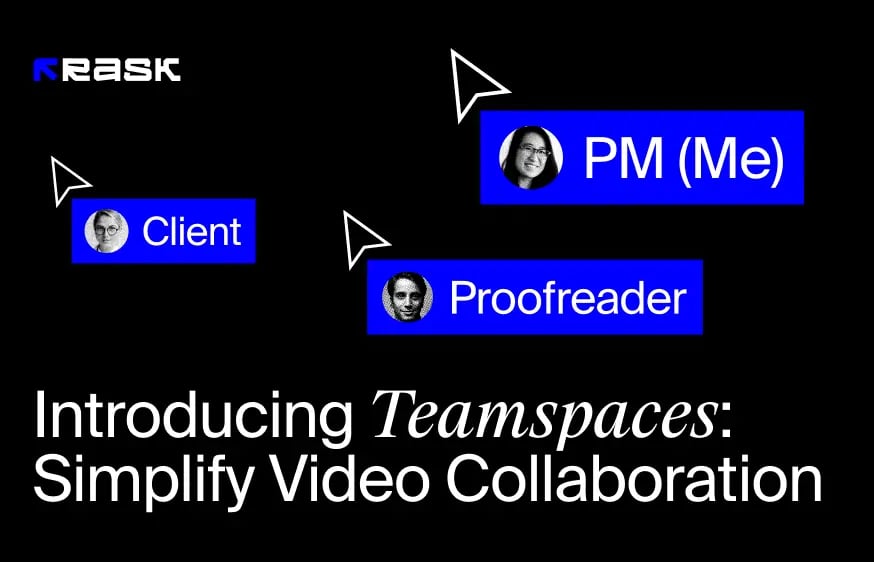
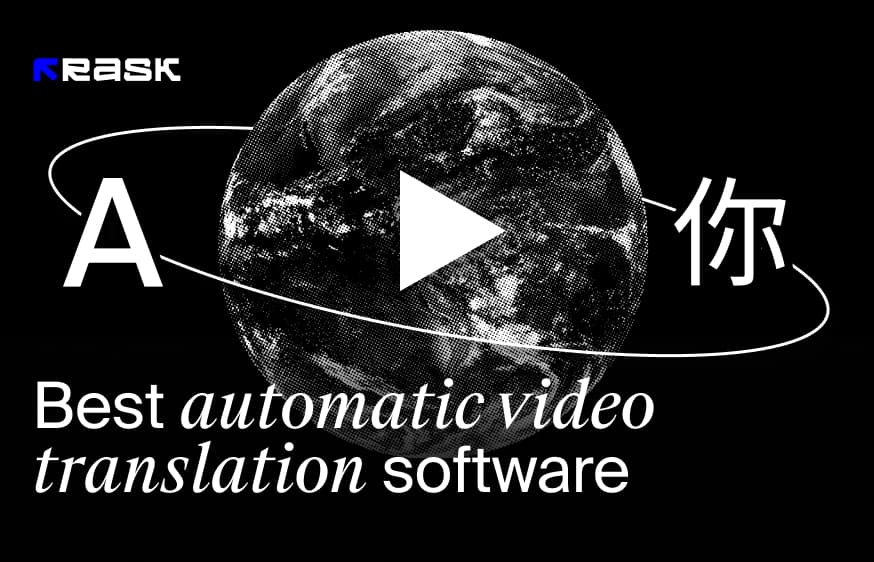
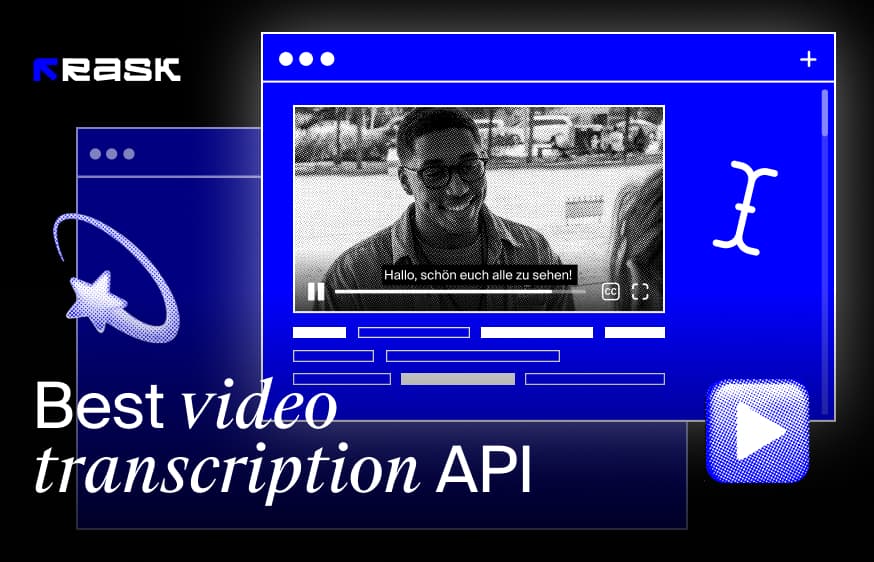

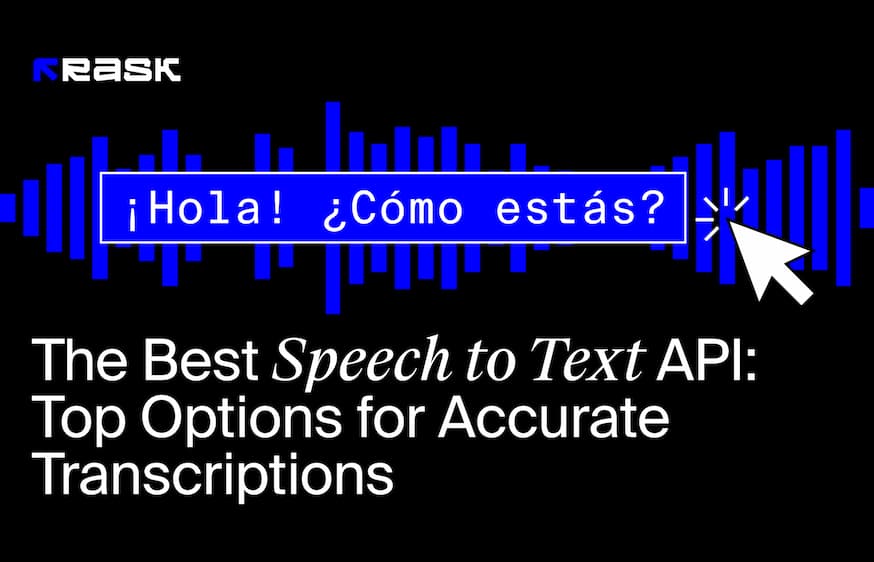
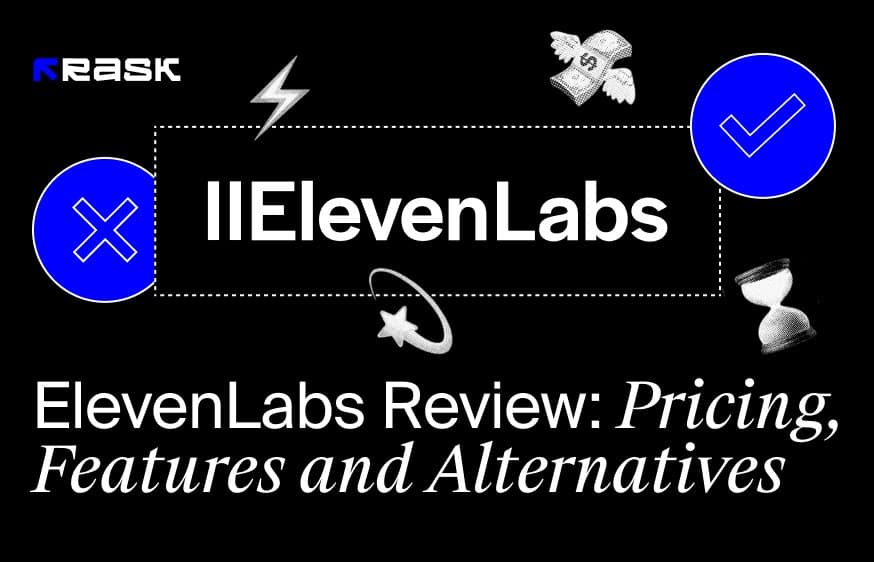
.jpg)
.webp)

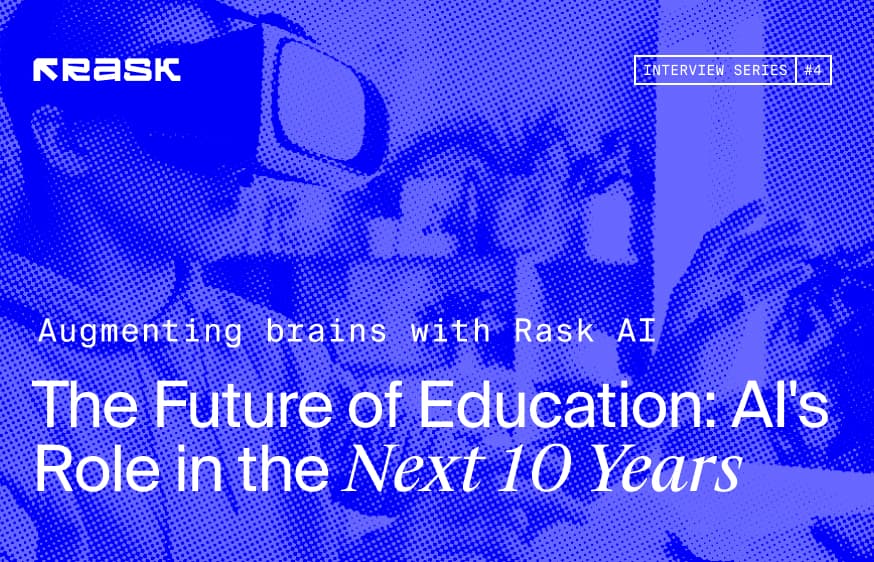
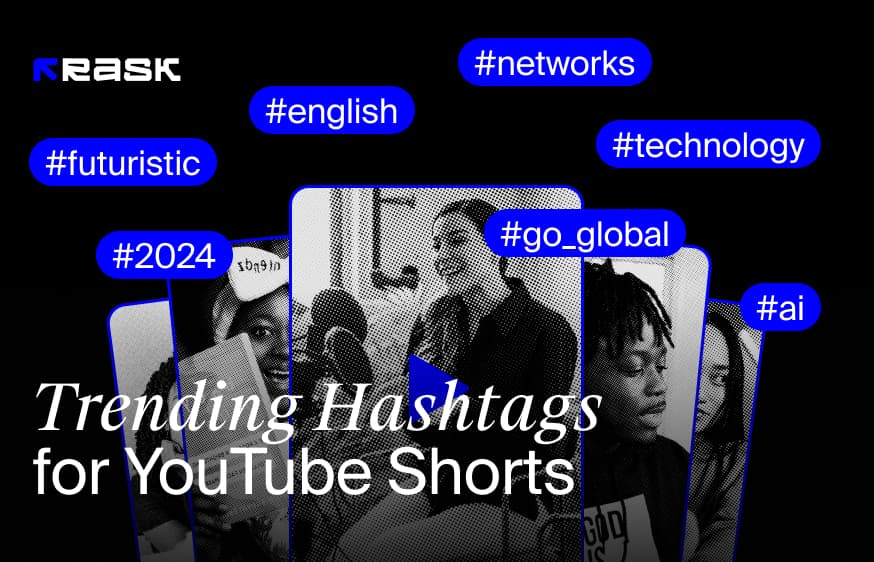
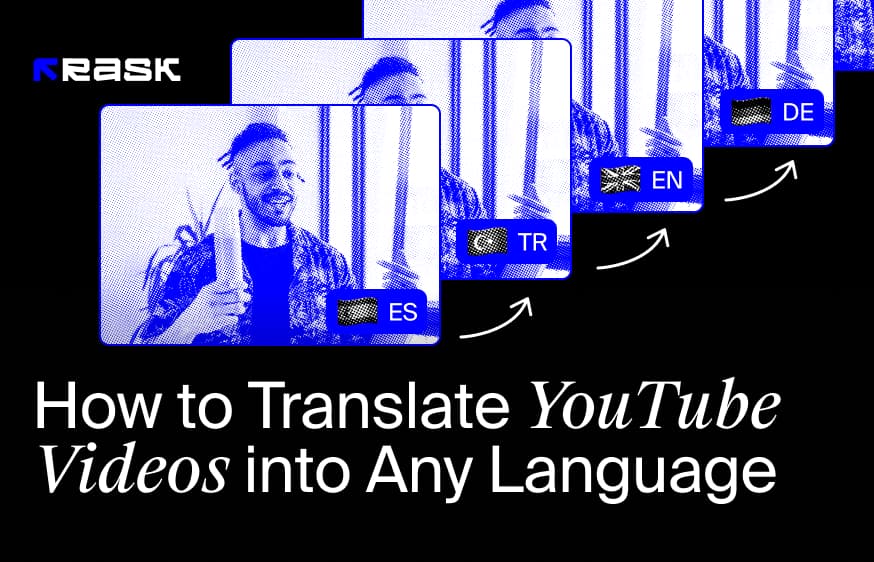
![8 Best Video Translator App for Content Creators [of 2024]](https://rask.ai/cdn-cgi/image/width=960,format=auto,fit=scale-down/https://cdn.prod.website-files.com/63d41bc99674c403e4a7cef7/6668a3dcd3175bd1d1c73c81_Best%20video%20translator%20apps%20cover.webp)
![Best AI Dubbing Software for Video Localization [of 2024]](https://rask.ai/cdn-cgi/image/width=960,format=auto,fit=scale-down/https://cdn.prod.website-files.com/63d41bc99674c403e4a7cef7/66685014f68137eb05c89c16_Cover.webp)

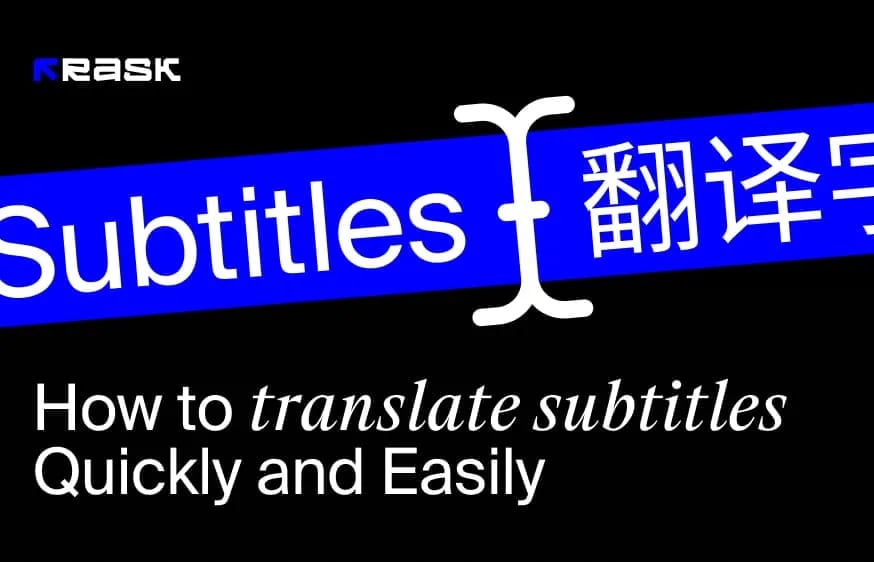
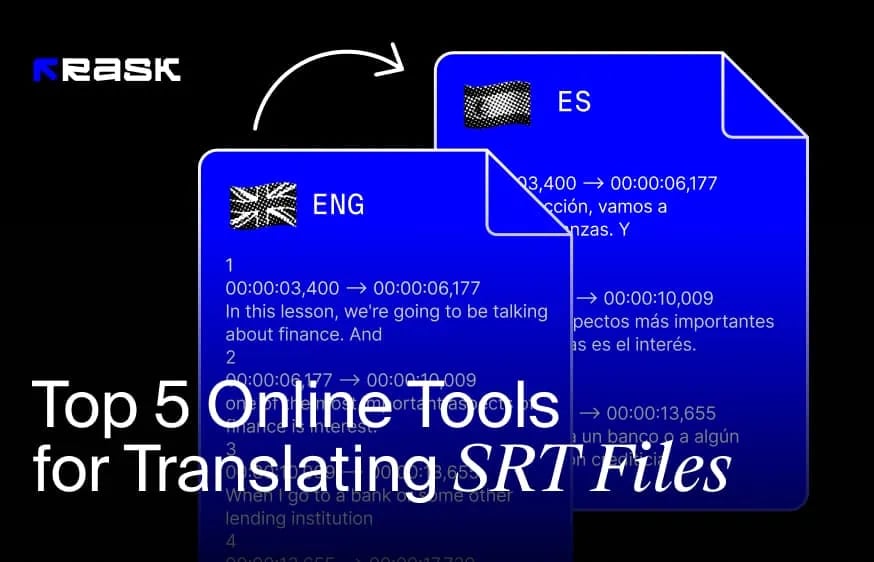

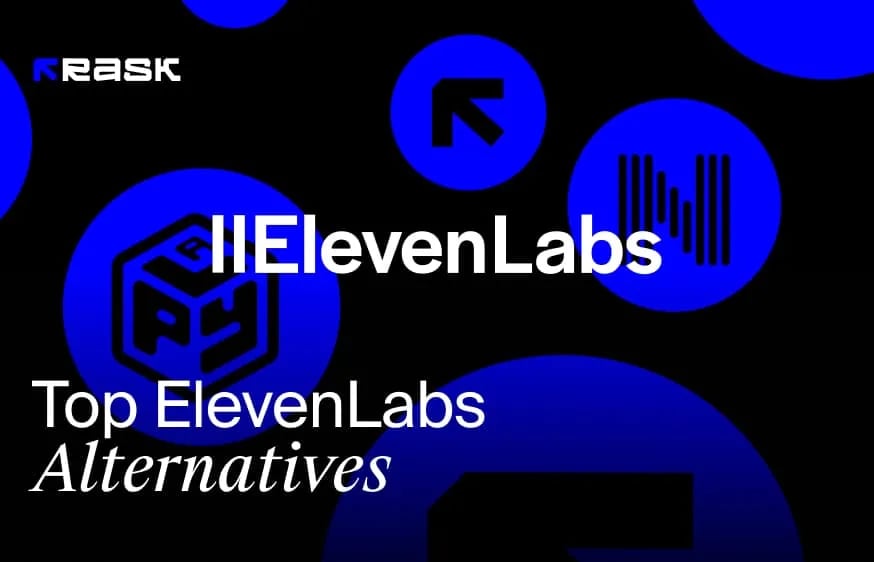
.webp)
